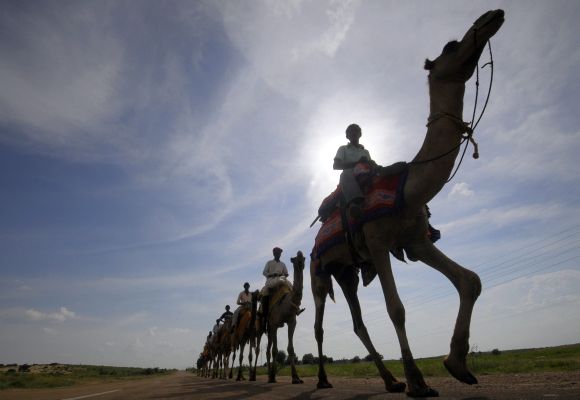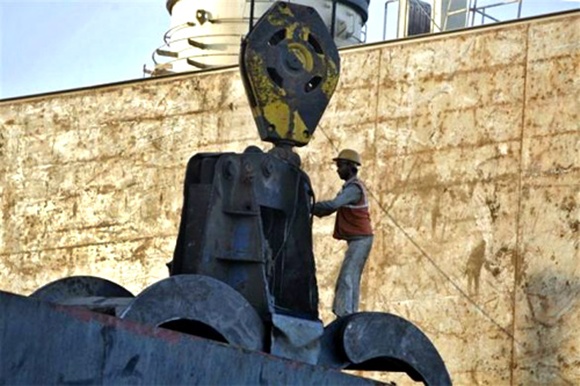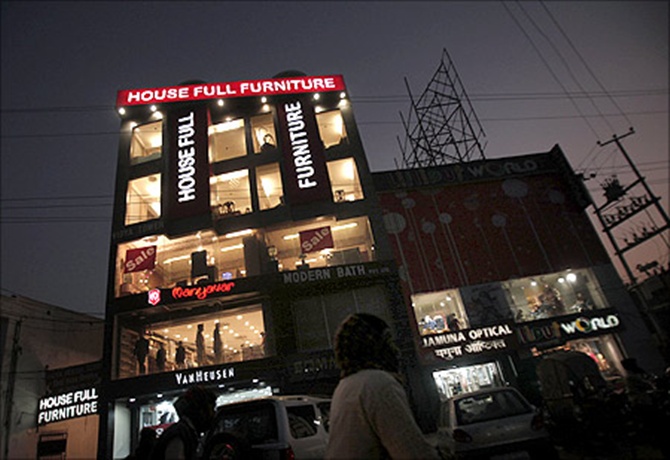
For some sort of convergence among states, the recent outperformance by poor states has to continue for a long time.
Between 2006 and 2012, annual growth in Bihar exceeded 10 per cent. Rajasthan is credited to have done considerable work on reducing poverty levels in the last five years.
Madhya Pradesh has recorded an impressive performance on the agriculture front; it has also become the second state, after Gujarat, to achieve power-surplus status.
And, Odisha is not only one of the fastest growing states but has also become one of the most preferred investment destinations in recent years.
Yet, a panel headed by Reserve Bank of India Governor and former chief economic advisor Raghuram Rajan says these and a few other states are among the least developed ones.
Does this suggest two decades of liberalisation and the recent outperformance by these states failed to reduce the gap between rich and poor states?
...

Two recent papers persuasively argue the pecking order of states has, more or less, remained unchanged since 1993. While rich states have held their ground, poor states are nowhere close to catching up.
For some sort of convergence among states, the recent outperformance by poor states has to continue for a long time.
In an emailed response, Arvind Subramanian of the Peterson Institute for International Economics and Center for Global Development, Washington DC, said, “The pecking order has remained the same because the recent good performance has been relatively recent, not long enough to overtake past differences. The main reason, apart from large past differences, is the fact that governance has only recently improved in poorer states. That is essential to drive capital towards these states and start the convergence process.”
In their paper, Growth in India’s States in the First Decade of the 21st Century: Four Facts (Economic & Political Weekly, January 21, 2012), Subramanian and economist Utsav Kumar argued convergence among states was nowhere close to a reality.
The paper said, “We continue to see the phenomenon of divergence or rising inequality across states: On an average, the richer states in 2001 grew faster in 2001-09.”
...

What do the data indicate about key economic parameters? According to Central Statistical Office data, among major states, Punjab, Maharashtra and Haryana occupied the top three slots in terms of per capita income in 1993-94.
The last three positions were accounted for by Uttar Pradesh, Odisha and Bihar. Ten years later, in 2003-04, the top three slots were unchanged, while there was a change in the last three slots - Odisha made way for Jharkhand.
However, in 2011-12, Punjab lost its position among the top three states; Gujarat took the number three slot. The last three slots remained unchanged.
The paper by Subramanian and Kumar examined data from 1993 to 2009. It said in all major states, except three, net state domestic product (NSDP) per capita growth increased in 2001-2009, compared to 1993-2001.
The three states where growth decelerated were Himachal Pradesh, Rajasthan and West Bengal. The paper said, “Average growth (per capita NSDP) across the 21 states doubled from 2.8 per cent in the 1990s to 5.8 per cent in the 2000s.”
...

Another paper, 'Have Gujarat and Bihar Outperformed the Rest of India', by R Nagraj and Shruti Pandey (Economic & Political Weekly, September 28, 2013), examined the performance of Gujarat and Bihar.
It said, “In the popular and media imagination, fed by economists and columnists, Gujarat and Bihar have recorded an extraordinary economic performance in the past decade. But a careful analysis shows Gujarat, always one of the richest states, has done no better than before. In neither industry nor agriculture has its position radically changed.... Likewise, Bihar’s position at the bottom of the league has not changed dramatically.”
The paper examined the performance of the two states relative to the national average in terms of per capita income, performance of agriculture and industry and social development.
...

It concluded Gujarat remained steady at the eighth or ninth slots, in terms of per capita income, from 1993-94 to 2011-12.
The state’s best performance was in 1998-99, when it occupied the sixth position, from which it slipped to 12th in 2000-01.
Bihar, on other hand, has been steady at the bottom of the league table, in terms of per capita income, since 1993-94.
On the agricultural front, the performance of these two states has seen little variation. Gujarat’s share in agriculture gross state domestic product (GSDP) of all states stood at five-seven per cent since 1993-94, while Bihar’s share has varied between four and five per cent in the last 20 years.
The paper said, “The observed surge in Gujarat’s agriculture in the last decade merely represents a recovery of the ground lost in the 1990s.” In terms of industrial growth, the paper said Gujarat “held the second rank in GSDP in total manufacturing since 1993-94 (after Maharashtra). But its share in GSDP of total manufacturing of all states steadily rose from 11 per cent in 1993-94 to 14 per cent in 2011-12”.
...

On the social sector, the paper ranked the states according to the physical quality of life index, a simple average of the literacy rate, infant mortality and life expectancy at the age of one.
It found among 17 states, Gujarat’s position remained unchanged at seventh between 2001 and 2011. In 2011, Bihar was 13th in this index, a position it held in 2001 as well.
In an emailed response R Nagraj, one of the authors of the paper and professor at Indira Gandhi Institute of Development Research, said, “Overall, there is considerable stability of ranking of states. However, in manufacturing, there are some significant changes. For instance, per capita NSDP in manufacturing in West Bengal and Kerala have declined, while states such as Karnataka and Haryana have moved up, over a long period.”
Therefore, data clearly indicate the evolution of state economies in 20 years offers little hope of regional disparity being reduced.
Will the implementation of the recommendations of the Rajan committee, if done in earnest, change that?